PCMark 10
We ran two benchmarks using PCMark 10: the Full System Drive Benchmark as well as the Data Drive Benchmark. This review is likely PCMark 10’s last time being included in my SSD reviews, so enjoy it while it lasts!
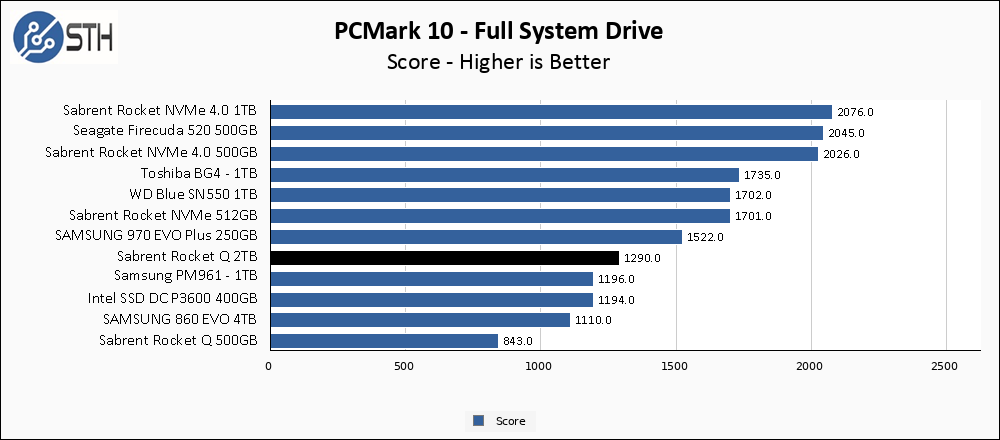
The Rocket Q 2TB lands a little low on this benchmark, compared to where it has been placing on previous tests.
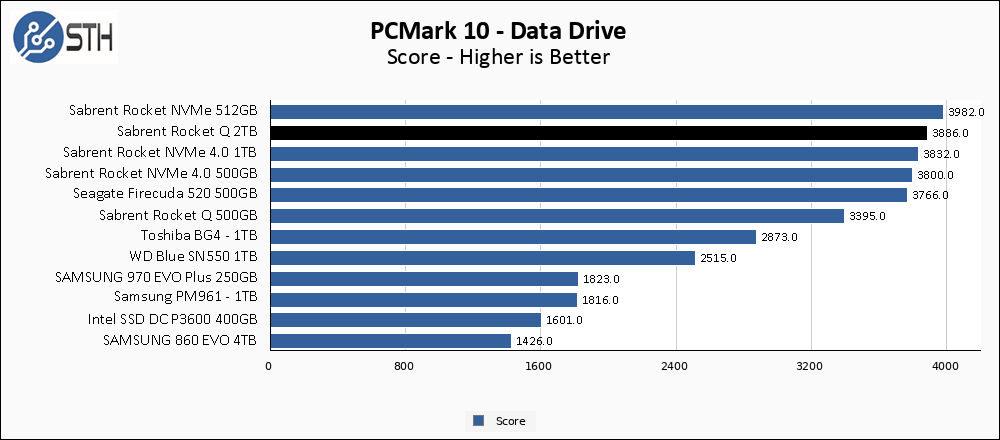
For the Data Drive benchmark, the Rocket Q 2TB shoots to nearly the top of the chart, even beating out some PCIe 4.0 based drives.
SPECworkstation 3.0.2 Storage Benchmark
SPECworstation benchmark is an excellent benchmark to test systems using workstation type workloads. In this test, we only ran the Storage component, which is 15 separate tests.
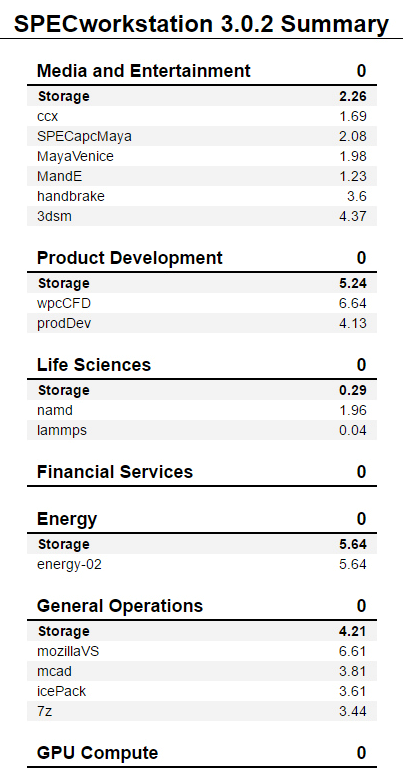
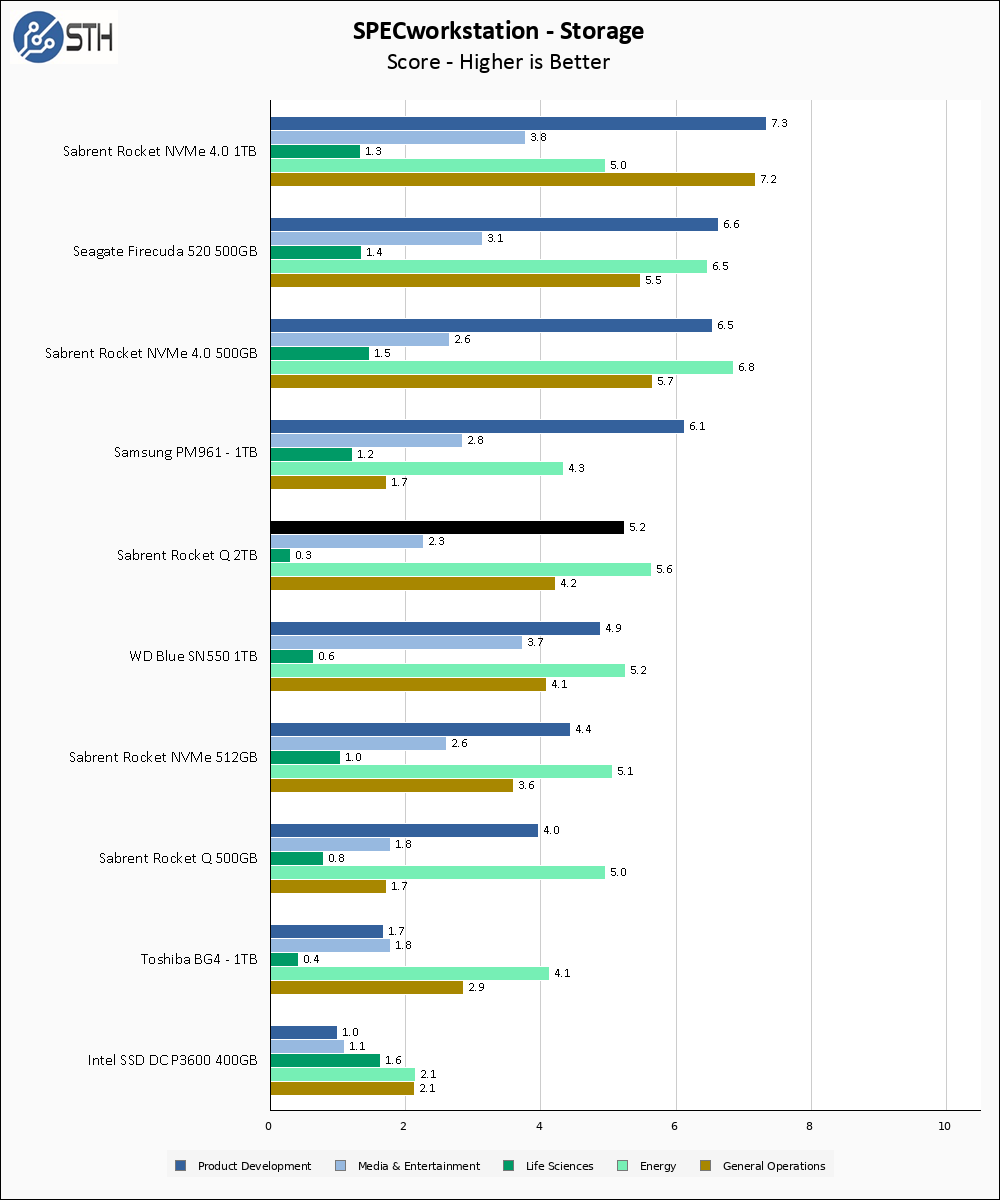
The Rocket Q 2TB manages an overall improvement compared to the 500GB drive, and a decent showing among PCIe 3.0 drives.
Temperatures
We monitored the idle and maximum temperature during testing with HWMonitor to get some idea of the thermal performance and requirements of the drive. Please keep in mind that our test bench is an open frame chassis in a 22C room, and is thus not representative of a cramped low-airflow case.

The Rocket Q 2TB keeps temperatures reasonable and should have no thermal problems in most common deployment scenarios.
Rocket Q 2TB vs 500GB
We wanted to take a moment and specifically point out the benefits of the more populated controller channels and cache area when moving to a higher capacity SSD, and so a direct comparison to the Rocket Q 500GB seemed appropriate.
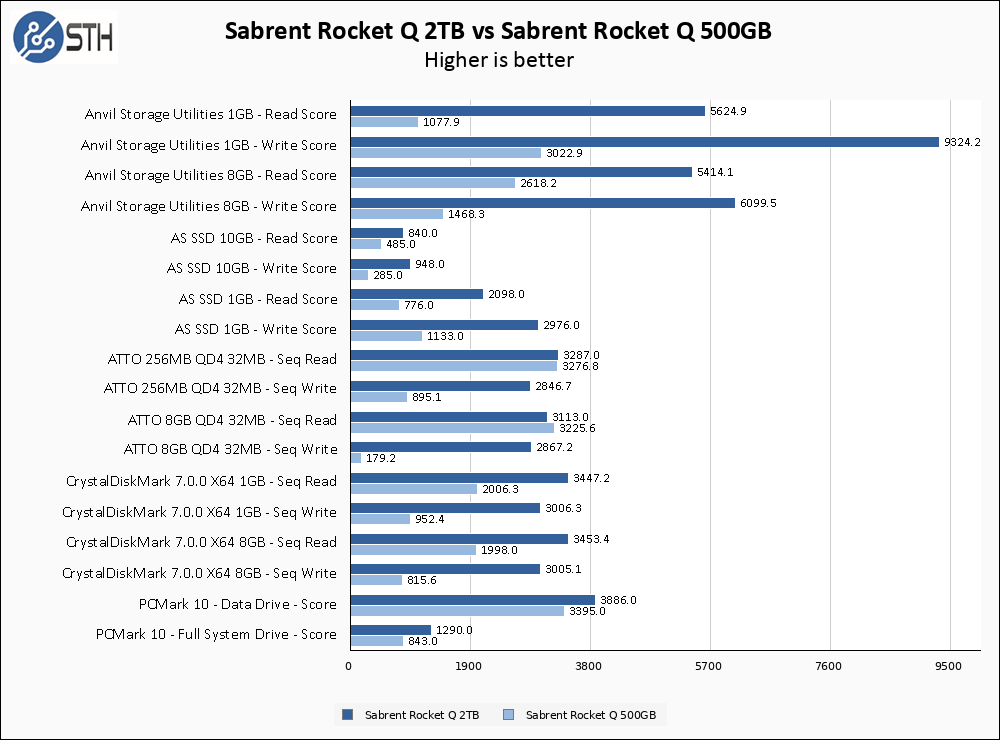
As you can see, the larger Rocket Q 2TB beats out its 500GB brother by a significant margin in nearly every test. Considering that these drives are otherwise identical, these differences come entirely from having more controller channels populated and the larger psuedo-SLC cache area. If you need high performance from your SSD, sometimes you might have to purchase more capacity in order to get to that performance level.
Final Words
For a 2TB NVMe SSD, the Rocket Q 2TB is among the least expensive at around $250. The larger capacity of the drive helped improve upon the performance we experienced when we tested the 500GB version of the drive, but the Rocket Q remains a QLC drive and still has the potential for some dramatic swings in write performance, especially as the drive fills up. As we tested it though, the drive performed very well.
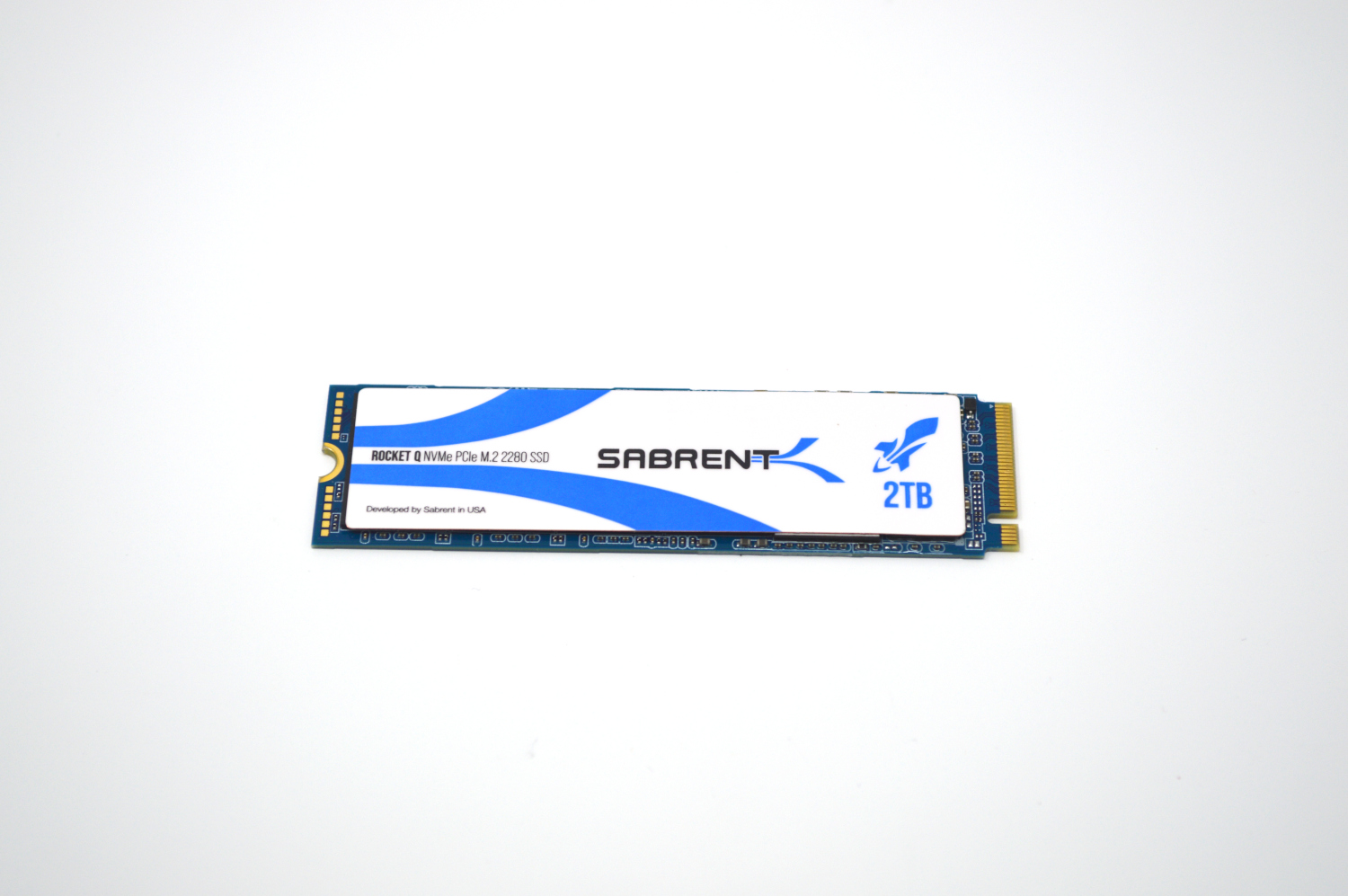
The Rocket Q line is focused on users that need a good amount of SSD capacity at a reasonable price point, and the 2TB unit succeeds in that goal. All QLC based drives suffer potentially worse performance than the TLC and MLC based predecessors, but the storage efficiency of QLC has been directly translated into more capacity per dollar. If your usage profile is heavily write based, QLC drives are likely inappropriate as a whole, but for many uses the good read performance and high capacity will be highly valued. At 2TB, it is also a capacity point where another segment of users can pass on hard drives for SSDs. For those users, the Rocket Q 2TB should be given serious consideration.




what i don’t understand, that these days they release pci-e gen 3 nvme device. not specifically Rocket, but any other manufacturer. pci-e gen 4 is almost 1 year ago released/available, but manufacturer still release pci-e gen3 devices….i don’t get that.
btw, nice review
While running CrystalDisk, ATTO, Anvil and PCmark gives useful numbers for comparison, as seen with drive managed SRM drives, diesel engines, vacuum cleaners and televisions among other things, it’s possible for manufacturers to game the standard tests.
It would be nice if Serve the Home put together a set of realistic usage benchmarks and which confirm that TRIM support and other features really work while checking performance over time as well as reliability and heat generation.
@Eric,
Since this is primarily a consumer drive rather than a piece of server equipment, most ‘realistic’ loads would actually be less stressful than the tasks given by our benchmark suite. With that said, the benchmarks published in my review articles does not represent the totality of my time spent with the drives I review, and any odd behavior observed would of course be investigated and reported upon.
As for TRIM support, TRIM is fully functional. However, its use is actually avoided during the benchmarking – after I load the drive to 85%+ capacity and then purge some data, I intentionally do not issue a TRIM command and run the full benchmark suite with the drive in a ‘dirty’ state. Allowing a TRIM to take place would likely increase some of the performance numbers, but “performance right after a TRIM” is not the normal scenario for a SSD drive. My goal is to benchmark a drive that has been simulated to what I would consider its ‘middle aged’ state, hence overfilling it, deleting some data, and running it at 60%+ space used for the testing.
Many of us still use machines that only support up to Gen 3. If I’m spending 3K on a laptop, I like that Sabrent caters to the three year old machine. I just bought a 1T Sabrent Rocket NVMe as my backup OS drive. And I will be getting this 2T model to back up my 2T NVMe data drive.
I recently upgraded my 7 year old machine, and have some PCIe 4 slots, but I still opted for a 1tb nvme drive for many reasons, cost not being the top one.
For one thing, going from sata to nvme ssd yielded nearly 5x increase in read throughput. More than adequate for me, and makes memory swapping become an unnoticed thing.
When I next buy a drive — typically every 12 months (to take advantage of falling prices to replace the oldest drive in my cluster), I might consider a v4 one, especially if next generation consoles make them more price competitive.
I meant a 1tb pcie 3 drive
erik
PCIe4 is only available on niche products – and until Tiger Lake / Rocket Lake S / Ice Lake SP Xeon drop later this summer, it will not be mainstream. AMD’s market penetration is so small that major manufacturers (Samsung most notably) are holding off until there is sufficient number of machines that can take advantage of the faster interface – it is the same reason that there are only a few NICs that require PCIe4. Ampere GeForce is also being timed to make sure there is a sufficient market size to make that product viable.
It would be good to see a comparison table of pricing for 2TB++ drives.
@250, this is significantly more expensive per TB than Micron or Samsung’s SATA QLC offerings (which sit around $380 for 4TB in the UK despite one being consumer and one Enterprise), but this parks more tanks on the lawn of the HDD makers.
SanDisk was selling a 2TB SATA SSD last week ( dont know if it is still going on ) for $150.
And I was thinking of for this sort of price does it start to make sense to replace NAS drive to SSD.
Sandisk == WD. Do you really want to give HDD makers your money after the SMR stuff?